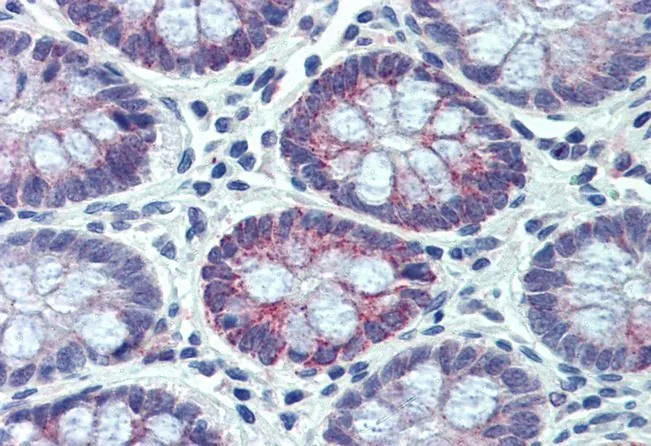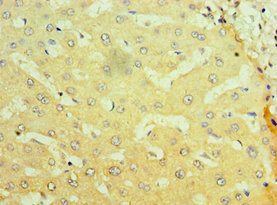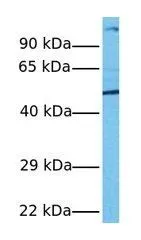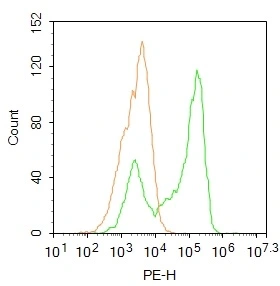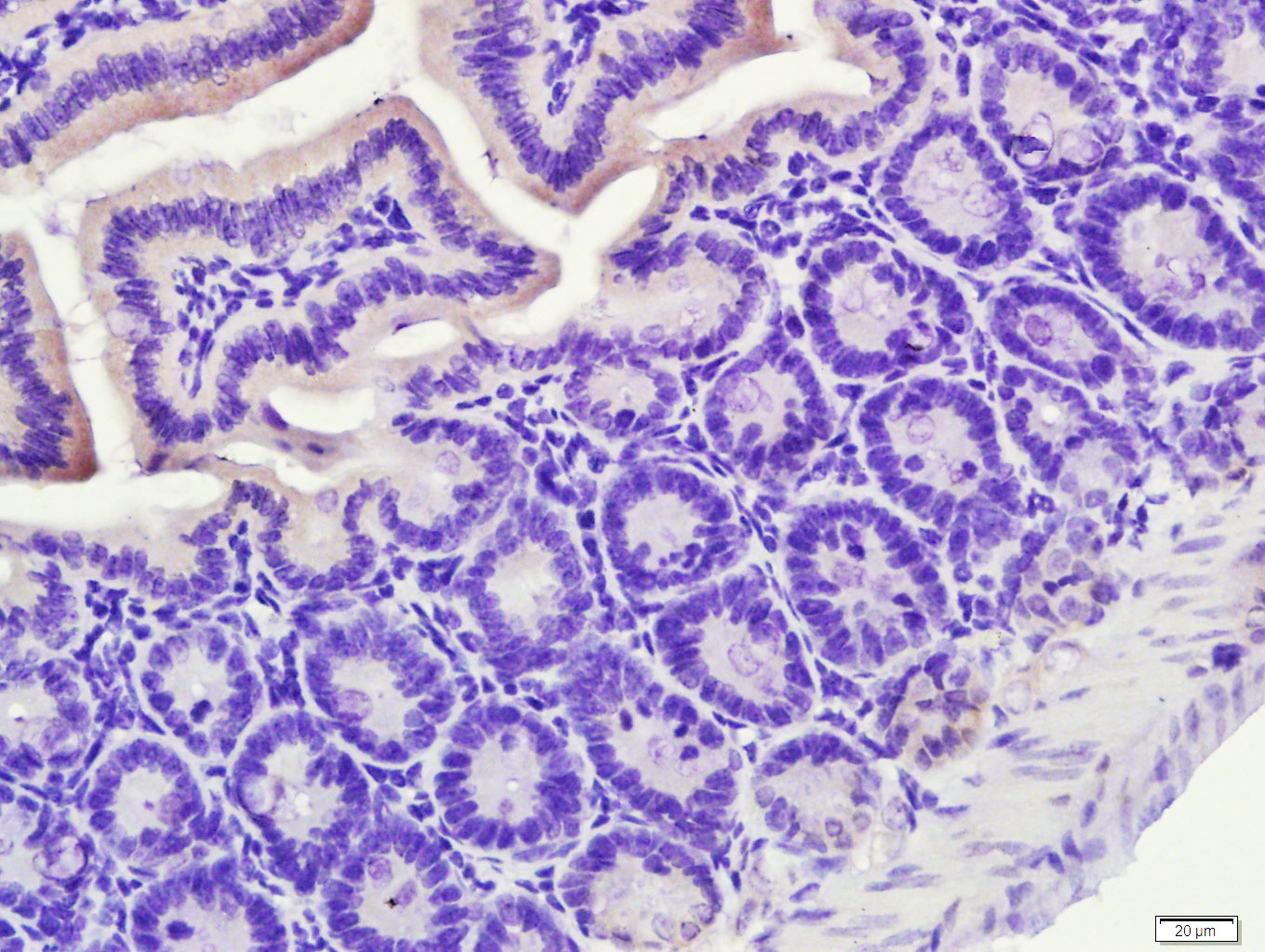
WB analysis of HepG2 lysate using GTX88474 PXR antibody, Internal. Dilution : 1microg/ml Loading : 35microg protein in RIPA buffer
PXR antibody, Internal
GTX88474
ApplicationsWestern Blot, ImmunoHistoChemistry, ImmunoHistoChemistry Paraffin
Product group Antibodies
TargetNR1I2
Overview
- SupplierGeneTex
- Product NamePXR antibody, Internal
- Delivery Days Customer7
- Application Supplier NoteWB: 1-3microg/ml. IHC-P: 3.75microg/ml. *Optimal dilutions/concentrations should be determined by the researcher.Not tested in other applications.
- ApplicationsWestern Blot, ImmunoHistoChemistry, ImmunoHistoChemistry Paraffin
- CertificationResearch Use Only
- ClonalityPolyclonal
- Concentration0.50 mg/ml
- ConjugateUnconjugated
- Gene ID8856
- Target nameNR1I2
- Target descriptionnuclear receptor subfamily 1 group I member 2
- Target synonymsBXR, ONR1, PAR, PAR1, PAR2, PARq, PRR, PXR, SAR, SXR, nuclear receptor subfamily 1 group I member 2, orphan nuclear receptor PAR1, orphan nuclear receptor PXR, pregnane X receptor, steroid and xenobiotic receptor
- HostGoat
- IsotypeIgG
- Protein IDO75469
- Protein NameNuclear receptor subfamily 1 group I member 2
- Scientific DescriptionThis gene product belongs to the nuclear receptor superfamily, members of which are transcription factors characterized by a ligand-binding domain and a DNA-binding domain. The encoded protein is a transcriptional regulator of the cytochrome P450 gene CYP3A4, binding to the response element of the CYP3A4 promoter as a heterodimer with the 9-cis retinoic acid receptor RXR. It is activated by a range of compounds that induce CYP3A4, including dexamethasone and rifampicin. Several alternatively spliced transcripts encoding different isoforms, some of which use non-AUG (CUG) translation initiation codon, have been described for this gene. Additional transcript variants exist, however, they have not been fully characterized. [provided by RefSeq, Jul 2008]
- Storage Instruction-20°C or -80°C,2°C to 8°C
- UNSPSC12352203

